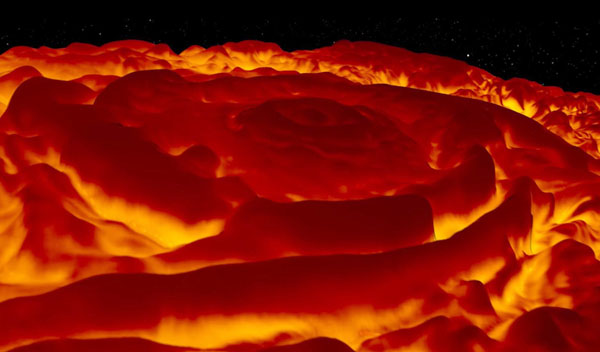Using data from NASA’s Juno mission, researchers created a 3D flyover of the gas giant’s north pole in infrared. It shows the turbulent dynamics of the pole, which is topped by a huge cyclone about 2,500 miles (4,000 kilometers) across. Ringing this monster atmospheric storm are eight other cyclones with diameters ranging from 2,500 to 2,900 miles (4,000 to 4,700 km).
The Juno spacecraft launched on Aug. 5, 2011, and entered Jupiter’s orbit on July 4, 2016, flying as low as 2,200 miles (3,500 km) over the highest cloud tops of the planet, according to NASA. The goal of the mission is to understand the atmosphere, magnetosphere and gravity fields of the fifth planet from the sun, which, in turn, will help planetary scientists grasp how Jupiter formed and how it has changed over the lifetime of the solar system, according to the space agency.
Juno mission scientists unveiled the new animation Wednesday (April 11) at the European Geosciences Union General Assembly in Vienna. The video uses data collected by the Jovian Infrared Auroral Mapper (JIRAM) aboard Juno. This instrument images the infrared portion of the spectrum, which is invisible to the human eye. By monitoring infrared wavelengths, JIRAM can “see” up to 45 miles (70 km) below the clouds that swirl around Jupiter, according to a statement from NASA’s Jet Propulsion Laboratory.
By Stephanie Pappas – Full Story and Video at Live Science



